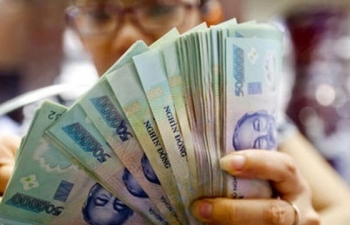Vietnam Central bank reduces rates to aid post-pandemic recovery
| Fitness startup WeFit files for bankruptcy | |
| New policy in Vietnam: fee for bank and credit organization's establishment reduced by 50% | |
| Banks accounted for half of the most profitable firms in Vietnam |
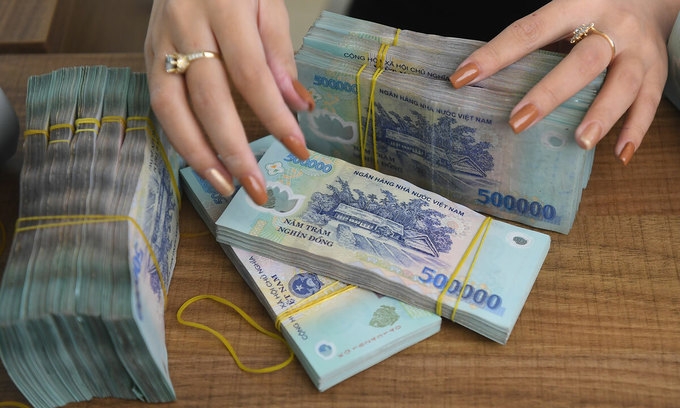 |
| An employee counts Vietnamese banknotes at a bank in Hanoi. (Photo: VnExpress) |
Under Decision No 918/QĐ-NHNN, the State Bank of Vietnam reduced the refinancing rate from 5 percent to 4.5 percent and the discount rate cut from 3.5 percent to 3 percent.
The dong deposit rate cap for terms of one to six months has been reduced from 4.75 percent to 4.25 percent.
The rate cuts take effect today (May 13).
In addition, overnight lending rates for electronic interbank payments and loans to offset capital shortages in clearance between the central bank and domestic banks were cut from 6 per cent to 5.5 per cent per year.
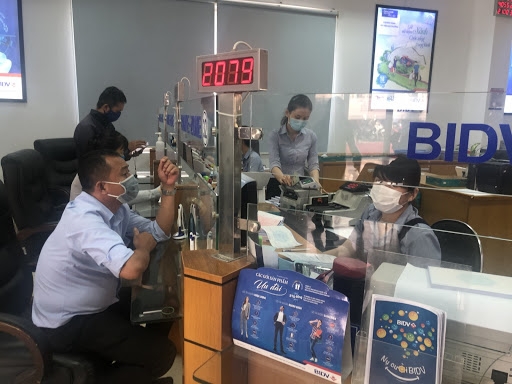 |
| The cuts aim to aid the country's recovery (Photo: Binh Duong News) |
The offering rate for valuable papers through the open market was reduced from 3.5 per cent to 3 per cent per year.
On the same day, the central bank also issued Decision No 919/QD-NHNN about the maximum rates for deposits in Vietnamese dongat credit institutions and foreign banks.
Accordingly, the rates for demand deposits and deposits with terms of one month or less were cut from 0.5 per cent per year to 0.2 per cent. For deposits with terms from one month to less than six months, the rate was cut from 4.75 per cent to 4.25 per cent, and from 5.25 per cent to 4.75 per cent for deposits with terms from one month to less than six months at micro-finance institutions and public credit funds.
Under Decision No 920/QD-NHNN, lending rates for economic sectors regulated in Circular No 39/2016/TT-NHNN were also reduced. The maximum lending rate for short-term loans in Vietnamese dong was slashed from 5.5 per cent per year to 5 per cent, while the rate for short-term loans provided by public credit funds and micro-finance insitutions were cut from 6.5 per cent to 6 per cent, reported by Vietnam News.
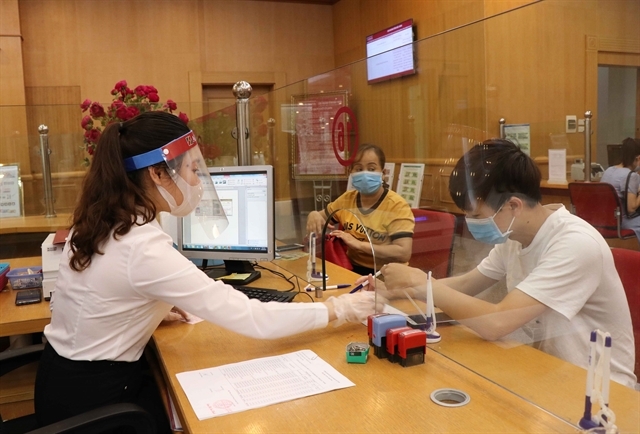 |
| Customers conduct transactions at the Viet Nam Bank for Agriculture and Rural Development in Bac Ninh Province. Rates have been slashed by up to 0.5 percentage points from today (Photo: VNS) |
The cuts aim to aid the country's recovery as the COVID-19 pandemic continues to hit the global economy forcing many central banks to cut rates and launch unprecedented stimulus packages to prop up weakening domestic economies and global markets.
Earlier on March 16, the State Bank of Viet Nam cut a series of rates by up to 0.5 percentage points which took effect from March 17.
Governor of the State Bank of Viet Nam Le Minh Hung met with Prime Minister Nguyen Xuan Phuc and the business community last Saturday and said that efforts would be made to ensure adequate capital for the economy.
Hung also added that the central bank might consider allowing raising credit growth targets for credit institutions from the plan of 14 per cent set at the beginning of this year.
The central bank’s statistics showed that as of April 28, credit growth had risen 1.32 per cent since the end of 2019.
It is part of the government’s efforts to "help businesses overcome difficulties and ensure social security amid the Covid-19 pandemic," the central bank said.
Prime Minister Nguyen Xuan Phuc has announced a new GDP growth target of 5 percent this year, much lower than the 6.8 percent set earlier. The International Monetary Fund has forecast growth of 2.7 percent, reported by VnExpress.
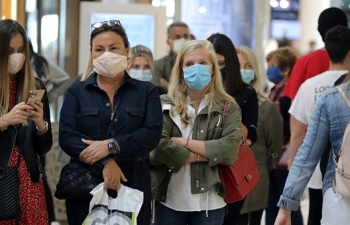 | Fear over the second wave of coronavirus grows in the world As many countries began to relax their restrictive measures to prevent the spread of the Covid-19 epidemic, the emergence of new outbreaks and the return ... |
 | Vietnam ranked 2nd in public opinion survey on govt response to COVID-19 Vietnam has been ranked second in a global survey on public approval of their government’s response to the COVID-19 pandemic, according to a new report. |
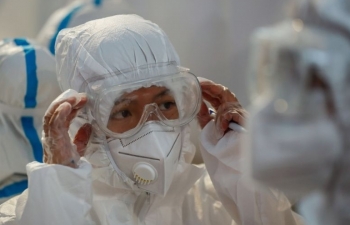 | Eyes are key COVID-19 transmission route Researchers from Hong Kong University of Public health reveal the coronavirus is up to 100 times more infectious through the eyes and airways than Sars, ... |


